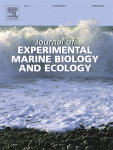Randy Holmes-Farley
Reef Chemist
View Badges
Staff member
Super Moderator
Excellence Award
Expert Contributor
Article Contributor
R2R Research
My Tank Thread
- Joined
- Sep 5, 2014
- Messages
- 67,367
- Reaction score
- 63,700
Don't want to write a book about it on this great thread, but I have reduced it down to 17ug 3 weeks between ICP results.
OK, thanks. IMO, that level is typically not high enough to be an issue in most cases, although tin is complicated as there are many chemical forms it might be, with different potential toxicity.




















